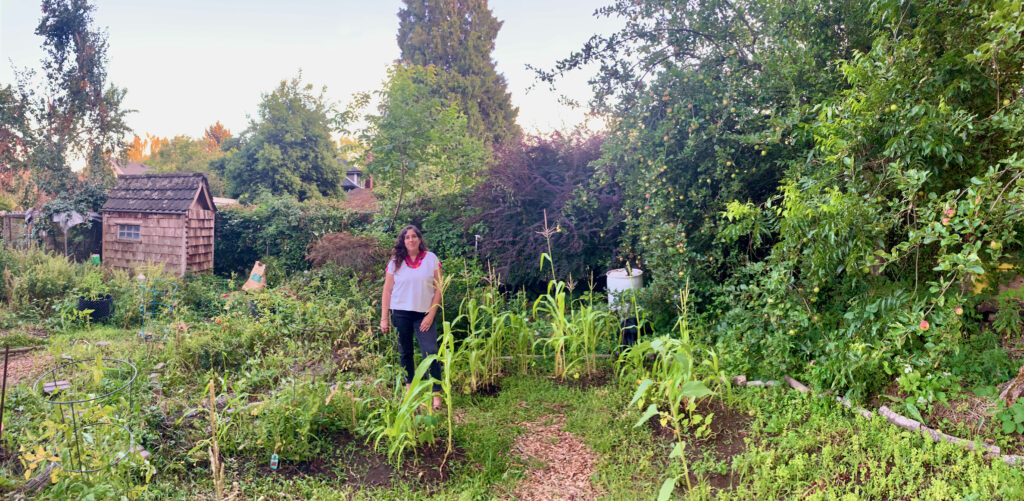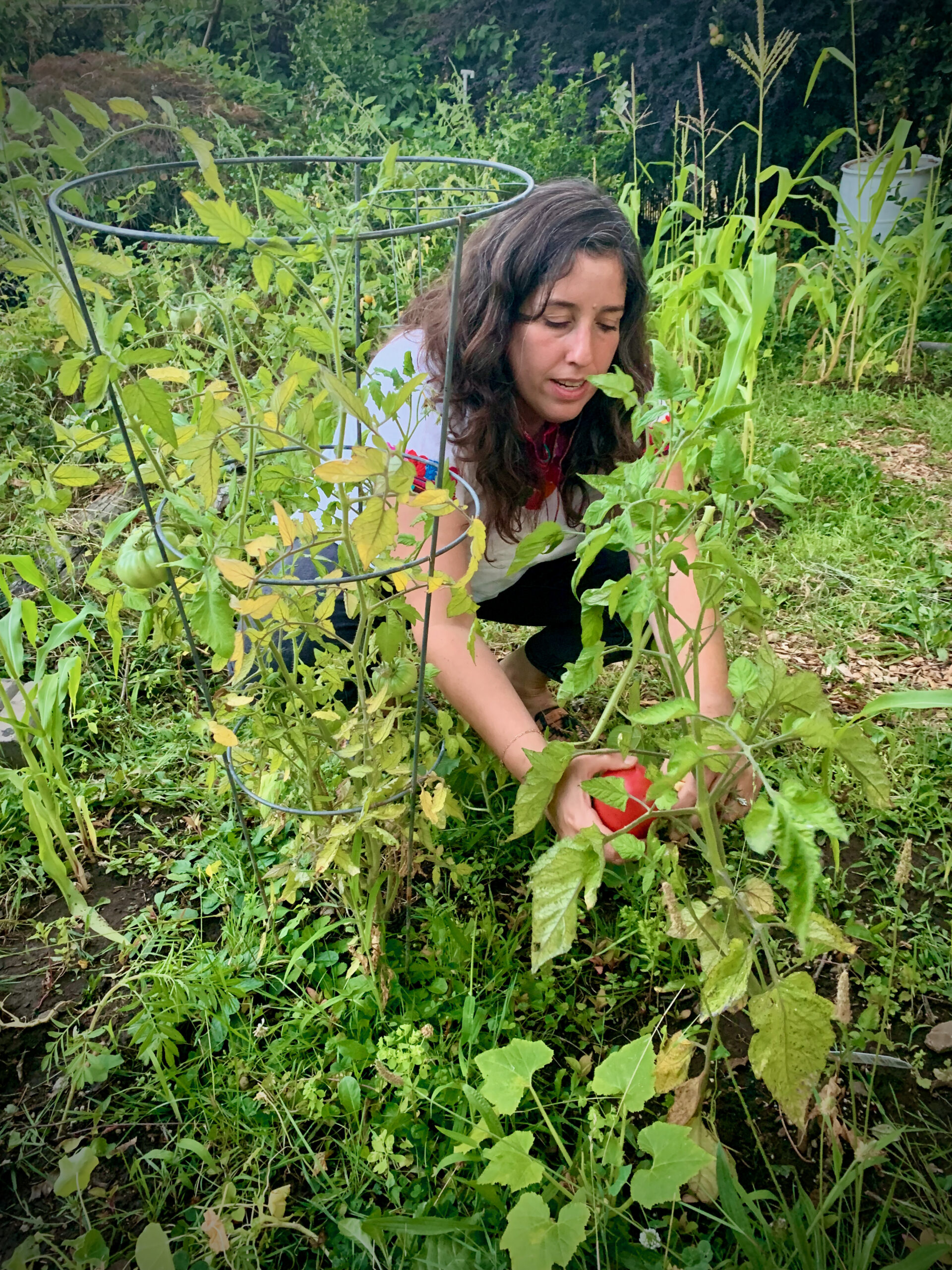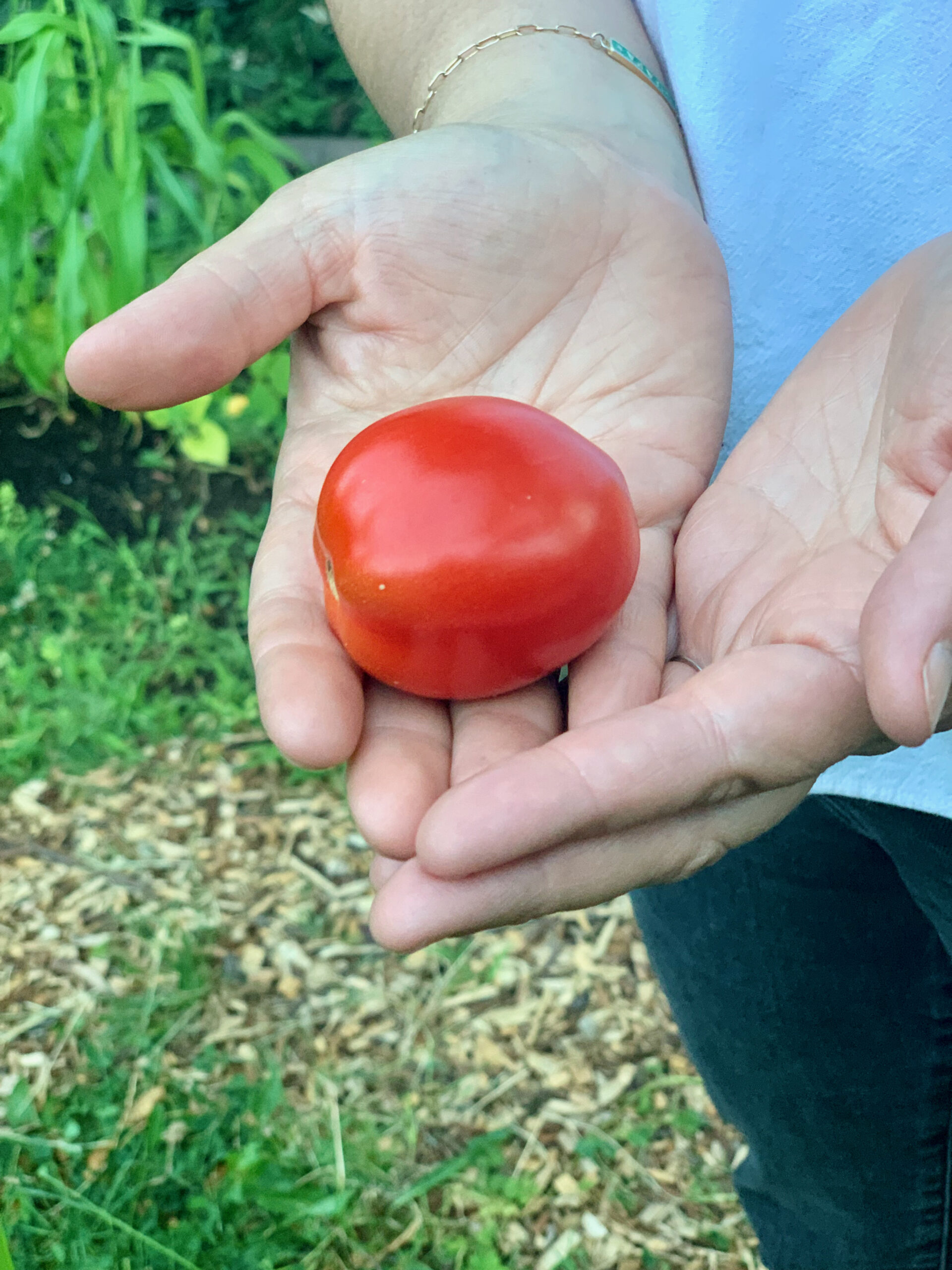What was your journey towards gardening?
I’ve always loved plants. I don’t remember what grade it was, but we did that thing in school where you put a seed in a wet cotton ball and you watch it grow and I just remember loving that. And even though there are ranchers way back in my family in Mexico, in my early childhood there wasn’t a lot gardening. My mom was a working mom with her own business and my dad worked. But when I was in the 7th grade I picked up the mail for our neighbor and watered her plants while she was on vacation. She had the most amazing vegetable garden: super lush, tomatoes, grape vines and everything. I was just “oooooh this is so amazing, it’s so cool, you’re growing this yourself?” I was blown away. I came back and asked my mom, “Can I do that?” We had this long skinny side yard, and she, god bless her, let me dig it up, plant tomatoes, plant grapes….I don’t think we were even there long enough for them to…I never got a grape. Maybe I got a tomato. That was like my first time I got to put something in the ground myself and watch it grow.
When we moved up to Washington state—my grandmother lived here, we wanted to have land, leave LA and have more room—My parents started up a veggie patch and planted trees on our property, so I learned a little bit more working with them. My dad, who when I was younger, was a banker and always in a suit, is really a great gardener, I absorbed a lot of stuff through him.
How do you see your cultural identity intersecting with gardening?
In my family, like many Mexicans and Chicanxs, our direct connection to our indigenous ancestors and ways was obscured generations ago through assimilation and forced or chosen intermarriage with the Spanish for survival. But our culture is infused with words and practices (including the relationships with plants and food) that come from the indigenous peoples of Mexico. Our ancestors sort of repackaged many of their practices to “pass” the colonial Spanish/Catholic scrutiny and allow them to continue the rituals.
My brother, my dad and I had been reading a Mexica history that was based on annals that were written just post colonization, when the Mexica and the other indigenous nation-states around Mexico City, learned the Latin alphabet and started to document our history in Nahuatl with the express purpose of passing it down to the survivors, out of the line of sight of the Spanish. These were written from a truly indigenous perspective and not polluted by “the Aztecs thought the Spanish were the gods!” perspective in the Spanish sponsored codexes. Even the name “Aztec” is not a name used by the Mexica. So I started reading these books and it was the most powerful reconnection to a part of my family story that was unknown to me.
I have other lineages too, like my mom is English and Irish…when you’re American and you’re those things, you grow up knowing stuff, knowing the history of those places and lots of different voices are filling in that picture for you. But reading the words of my indigenous ancestors, and hearing them for the first time, was like holy shit. When I understood the profound trauma of the conquest and how that kind of event literally reverberates through your DNA and your family for centuries – all of these connections were made for me and I felt like I needed to continue to learn more about my ancestors connection to the earth, their plant medicine, their ritual, their technology to honor them and to heal. This is an area I want to intentionally understand and reconnect to and know what my ancestors survived, and how they lived.
And it turns out I’m not alone. There’s an emerging online and real-life network of BIPOC folx who are actively decolonizing Mexican/Mexican-American culture and brujeria (a spiritual practice found across so-called latin-America including the U.S.) to access its indigenous roots and herbalism. Through that I connected with a wonderful human, xóchicoatl, who runs La Mala Yerba. They offer a queer, BIPOC centered 9-month healing circle called xinachtli, which means seed in Nahuatl. It’s a healing journey through plant medicine, reconnecting with ancestral knowledge in Mexica ceremony and ritual. It’s been totally magical and has changed my relationship with the plants I grow. Beautiful and deepening, healing: I have so much to learn.

Are there traditions that you practice when you’re gardening that are important to you?
This year I have made a practice to be present and intentional— not quite praying, not quite meditation—but trying to deepen my connection, and notice and feel, and make sure that I’m in communion and in balance with things.
It’s actually been really hard, gardening-wise, this year. For whatever reason, my timing has been off, the cultivating part has felt more challenging and I’ve needed to be more on it and things still aren’t….my tomatoes are tall and spindly, a lot of my plants got zapped by the heat because I planted too late…I’m doing a lot of thinking about why are things happening? Why is it not coming as easily? What’s going on with the earth? What’s going on with me? What’s going on with the way that I’m going about this? Feeling the intention…did I rush it and just try to throw it in there?
There’s a relationship I try to cultivate when I’m out there with my hands in the dirt. Trying to examine consciously the things that happen, the way things grow, the way I’m feeling about it…trying to draw lessons instead of just plowing and conquering through.




Do you have any plants that you grow that are significant to your cultural identity?
Corn, maiz, is sacred. I feel a deep connection to all the ancestral plant food from Mexico – tomatoes, tomatillos, squash, chiles and corn. I love them and my body loves them. Corn is one of those foods that’s nourishing, comforting food…whether in a tortilla, a taco, hominy, posole, esquites, elote- corn is ever-present. For my ancestors, it was the thing that allowed our civilization to grow and flourish. There’s a sacredness to it, a centrality, where everything comes together. It’s the thing that holds the other stuff.
Three words you’d use about corn:
Sacred
Nourishing
Healing
and very tasty!







Recent Comments